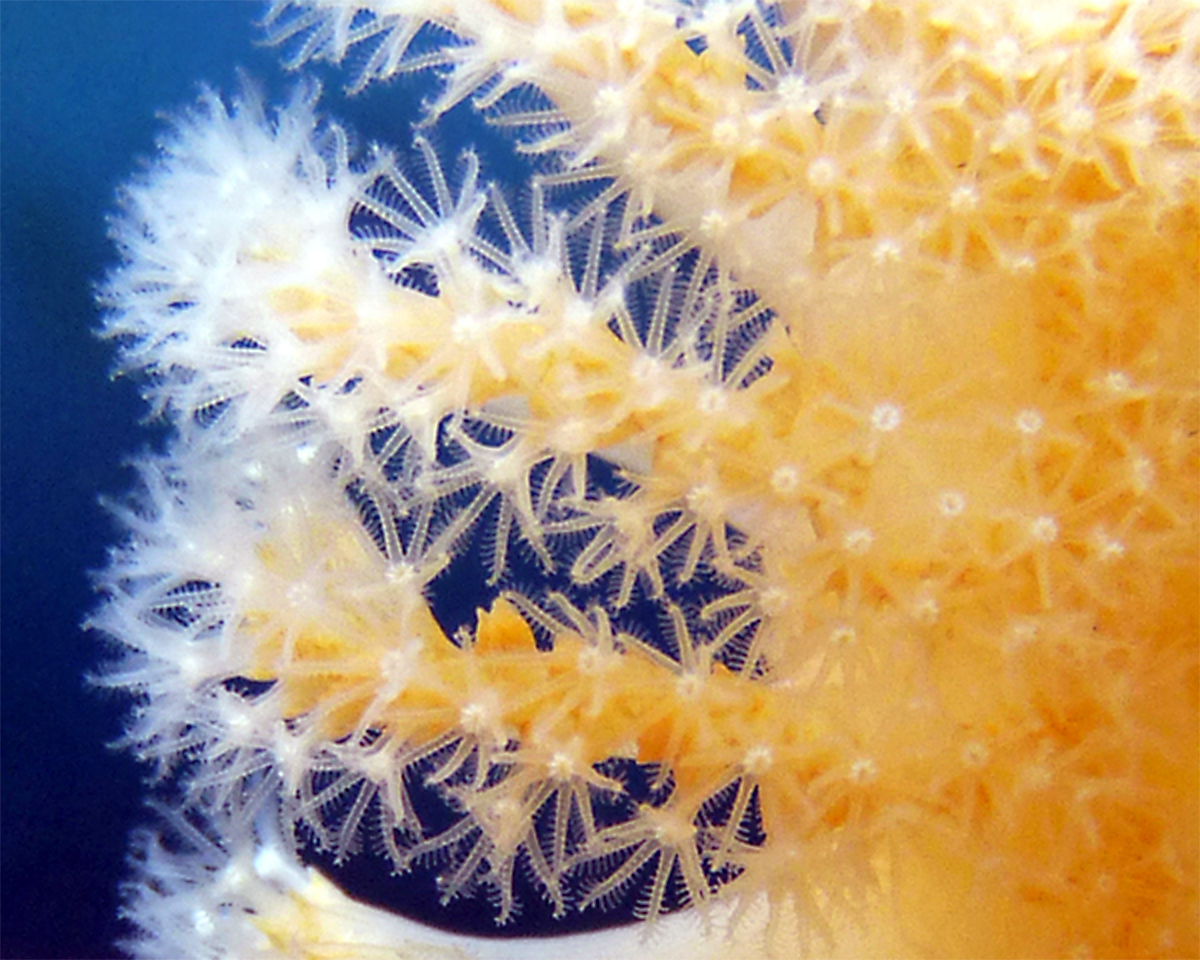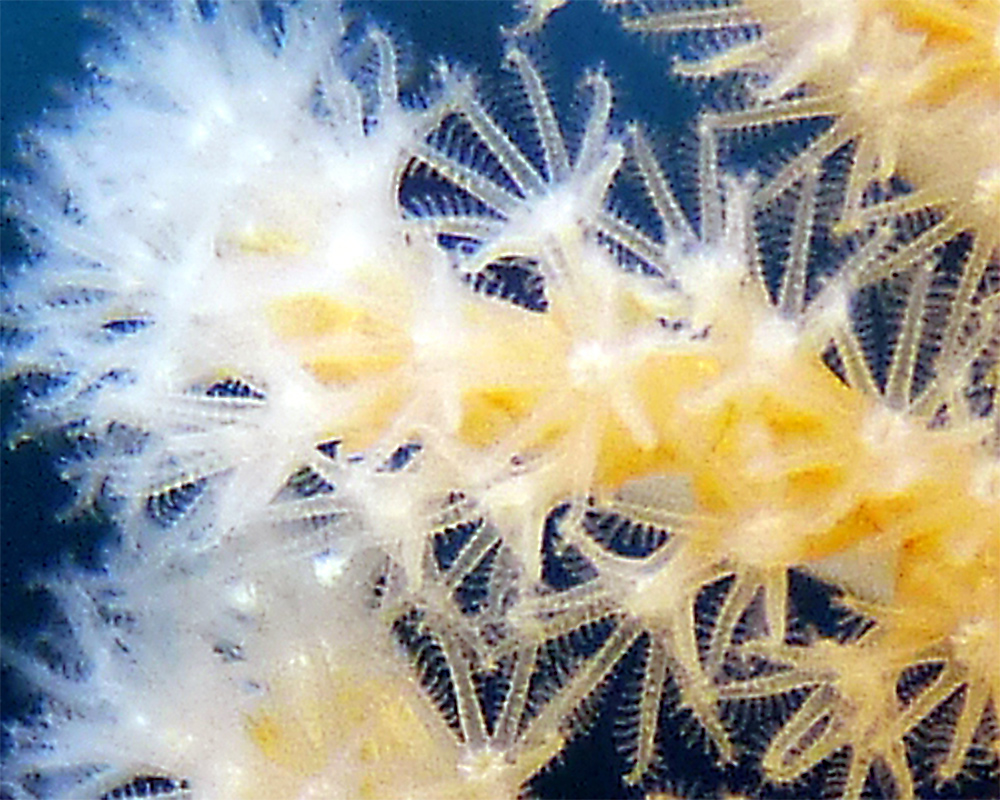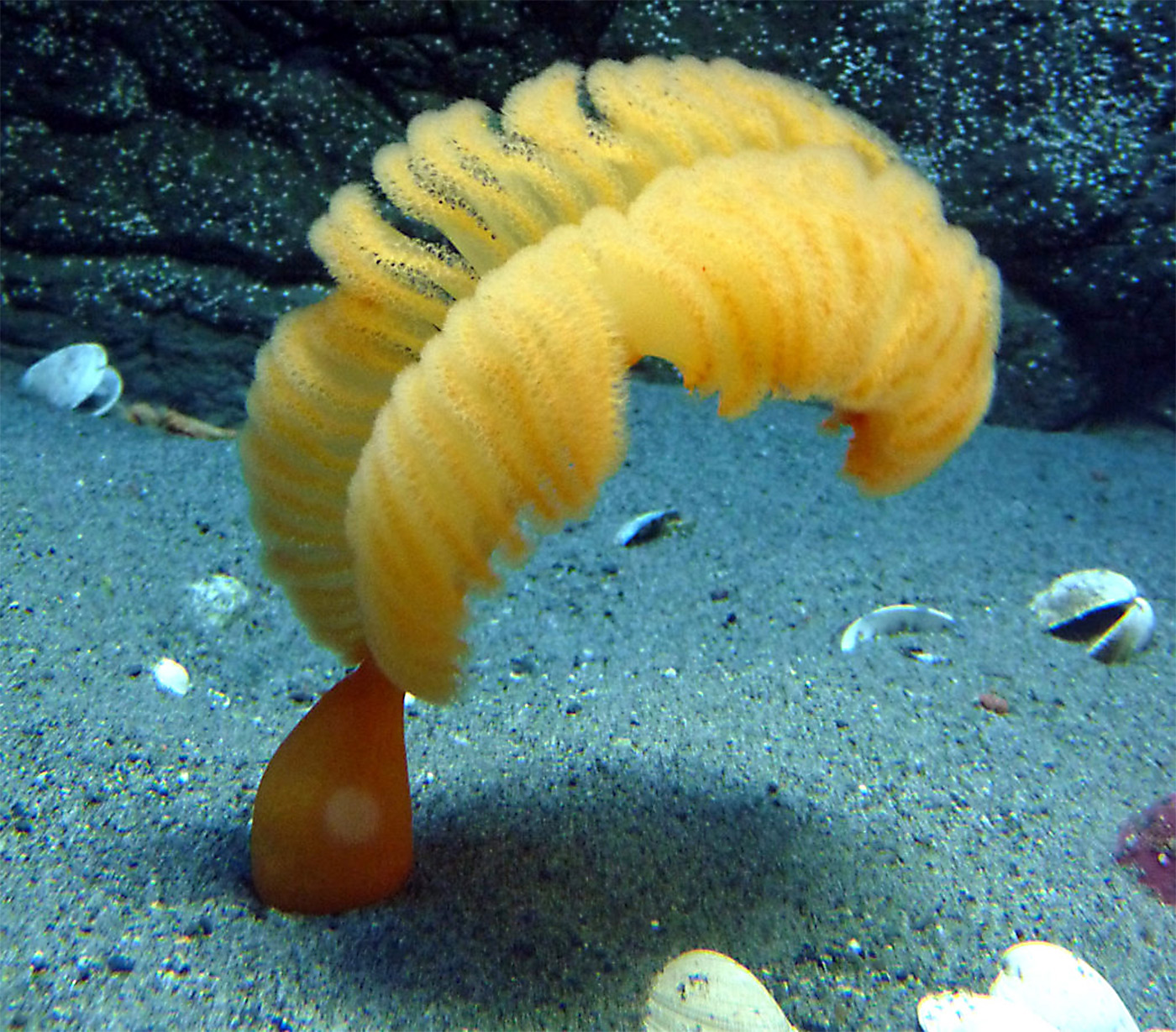Author: Marissa Toner
Scientific Name: Ptilosarcus gurneyi
Size Range: up to 48cm (19 inches) tall
Identifying Features: Sea Pens are given their name based on their shape since they appear like an old-fashioned feather quill used for writing. It is a colonial octocoral made up of many individual polyps (like little anemones), attached to one large primary polyp which anchors it into the sea floor. It has feather-like branches (made up from the secondary polyps). They stand upright and occur in a variety of colours from white, yellow to orange.
Habitat: The sea pen Ptilosarcus gurneyi occurs from Alaska to southern California. They live their lives completely submerged and occur in shallow subtidal water to depths that range from 45 to 700ft. They burrow their stalks into the mud or substrate on the sea floor, but for the first part of their life after fertilization they actually float in the water before planting themselves in the sea floor. Sea Pens can often be found in abundance in harbors, in sheltered areas close to shore, or in deeper waters.
Life Cycle: Sea Pens are made up of colonies of polyps that are separate sexes. Some of the polyps are male and some are female. Fertilization takes place outside the Sea Pen. The eggs and sperm are released and meet in the water. Once the egg is fertilized it will develop into a planktonic larva which will float in the water for a short time before rooting into the seafloor. They can grow very old; more than 100 years and the age can be indicated by growth rings (much like a tree).


Feeding Habits: Sea Pens have limited ways to feed considering how they maneuver themselves into the sand and are permanently stuck there. They feed through passive predation catching food such as zooplankton with the tentacles of their polyps. As a result their main way to adsorb nutrition is through this form of suspension feeding.
Predators: The main predators of the sea star are nudibranch’s such as Tritonia festiva and the Opalescent Nudibranch (Hermissenda crassicornis). Other Predators of the Sea Pen are sea stars such as the Leather Star (Dermasterias imbricata). To protect themselves the sea pen will force water out of themselves and burrow deep into the sea floor. One odd thing they can do is project a bioluminescent green liquid when they are forcing the water out! This may be to startle a predator.
References
Atkinson and Pullin. (1996).Life Cycle and Population Dynamics. Retrieved January 5th 2009 fromwww.ukmarinesac.org
Bay Science Foundation. (2004-5). Ptilosarcus gurneyi. Retrieved January 6 2009 from Zipcodezoo.com
BBC. Sea Pen. Retrieved January 6 2009 from www.bbc.co.uk
Columbia Encyclopedia. (2008). Sea Pen. Retrieved January 10th 2009 from www.encyclopedia.com
Encyclopedia.(2009). Sea Pens. Retrieved January 10th 2009 fromwww.absoluteastronomy.com
Joshua Columbus.(Dec.2002). The Race Rocks Taxonomy “Ptilosarcus Gurneyi”. Retrieved Jan 11th2009 from www.racerocks.com
Monterey Bay Aquarium Foundation. (1991-2010). Sea Pen. Retrieved on January 11th, 2009 fromwww.montereybayaquarium.org
Sea Pen. Retrieved on January 7th from www.bbc.co.uk
Sea Pen. Retrieved January 12th 2009 www.seaotter.com
Photographs by D. Young


